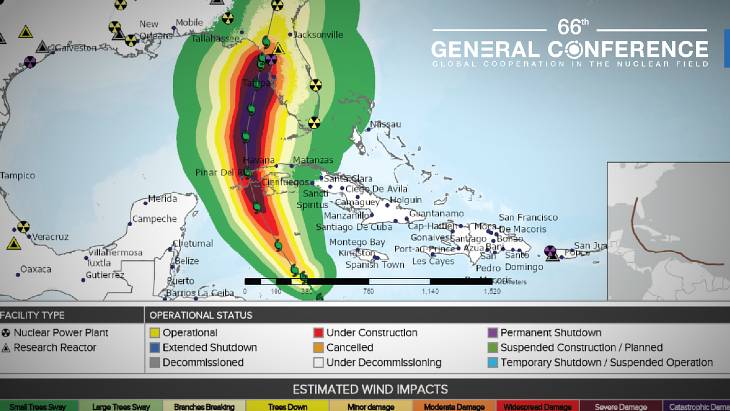During the launch, the IAEA’s Incident and Emergency Centre’s (IEC's) response system officer Günther Winkler said: "The EENS is designed to provide initial assessments of the severity of external events on nuclear facilities, which can lead to activations of the IAEA’s Incident and Emergency Centre. This tool will help us to promptly identify natural hazards that can affect nuclear or radiation safety in order to exchange information or to coordinate international assistance between Member States."
An example given was that of a cyclone, where an Event Notification Report “would include the basic information on the cyclone with maps, expected storm surge at coastal sites, the possible arrival time and the estimated wind speed at nuclear installation sites”.
This information is vital for the IAEA’s IEC to be able to swiftly offer its assistance to support an affected country, explained the head of the IAEA’s External Events Section, Paolo Contri.
"The EENS allows us to monitor the global natural hazard situation in the vicinity of all nuclear installations, not just the nuclear power plants, including large cities where radioactive sources may be affected by the hazard. This system is an integral part of IAEA’s work, allowing us to evaluate the situation and help countries mitigate the associated risks. In the years to come, the severity of natural hazards is expected to increase because of climate change. We must be prepared for this," said Contri.
The system has been developed in collaboration with University of Hawaii’s Pacfici Disaster Center and internet application developer Tenefit and financially supported by France, Japan and the USA.
It has launched with modules focusing on earthquakes and cyclones with modules on river floods, tsunamis, volcanic eruptions and wildfires all under development.





_53514_33880.jpg)

_91467.jpg)
_47120.jpg)





